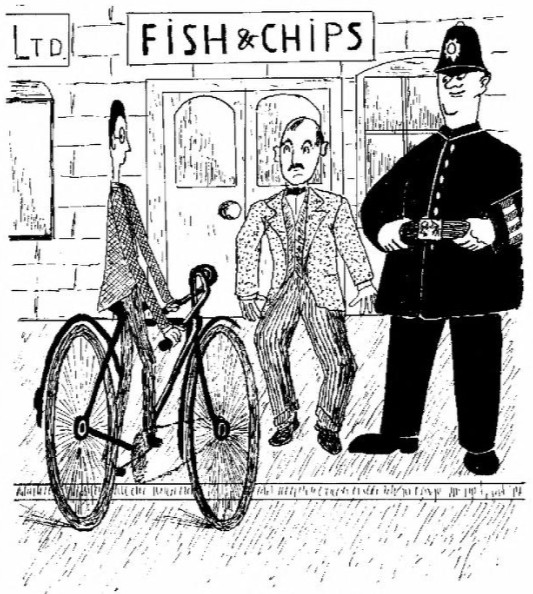
In 1940, George Gamow published Mr Tompkins in Wonderland, in which a bank clerk attends a lecture on relativity and then finds that Einstein’s principles have become apparent in the ordinary street scenes before him:
A single cyclist was coming slowly down the street and, as he approached, Mr Tompkins’s eyes opened wide with astonishment. For the bicycle and the young man on it were unbelievably shortened in the direction of the motion, as if seen through a cylindrical lens. The clock on the tower struck five, and the cyclist, evidently in a hurry, stepped harder on the pedals. Mr Tompkins did not notice that he gained much in speed, but, as the result of his effort, he shortened still more and went down the street looking exactly like a picture cut out of cardboard.
In later adventures Tompkins explores cosmology and quantum physics, again in an exaggerated world in which extreme effects become observable. Gamow called this a “fantastic but scientifically correct dream.”
